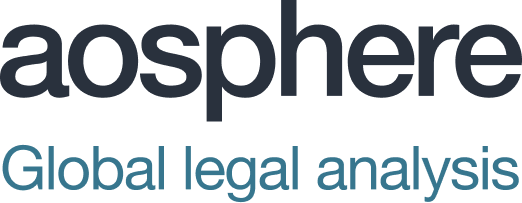Overview
Following its entry into force on 15 April 2024, the clock for transposition of AIFMD 2 into EU Member State national laws started ticking and with an effective date of 16 April 2026, we are beginning to see an increase in transposition activities by some EU Member States.
AIFMD 2 amends both the AIFMD and the UCITS Directive and makes targeted changes to rules relating to delegation, liquidity risk management, reporting obligations, the provision of depositary and custody services and the regulation of alternative investment funds (AIFs) that conduct loan origination activities.
In the following article we look specifically at the new regime that applies to AIFs that originate loans – one of the key pillars of the AIFMD 2 package.
At aosphere, we are tracking progress on implementation of AIFMD 2 across the EU in our Rulefinder Marketing Restrictions – Asset Management and Rulefinder Cross-Border Lending products.
Setting the scene for change
The AIFMD has to date generally been considered as a directive that focuses on regulating fund managers but the new loan origination regime introduced by AIFMD 2 somewhat shifts the focus to specific product related requirements with the introduction of new rules which aim to establish an efficient internal market for loan origination by AIFs. Until AIFMD 2, there were no EU-wide provisions governing the origination of loans by funds and therefore, the position has been driven by each Member State on a jurisdiction-by-jurisdiction basis, with some jurisdictions restricting the ability to lend to banks, credit institutions and other types of regulated entities.
The recitals of AIFMD 2 recognise that AIFs can provide an important source of financing for the real economy and in particular critical funding for EU small and medium sized enterprises who have often found it more difficult to access traditional lending sources. As such, the activities listed in Annex I of AIFMD that an AIFM may perform on behalf of an AIF have been expanded under AIFMD 2 to include the activities of originating loans and servicing securitisation special purpose vehicles.
While there is now clarity that such activities are within Annex I, the trade-off is that certain rules and requirements must be complied with when carrying on such activities. There are two sets of rules to consider - one which only applies to AIFs falling within the new definition of “loan-originating AIF” and the other being relevant for all AIFs that originate loans, irrespective of whether loan origination is their main strategy or not (although existing AIFs originating loans may benefit from certain exceptions and/or a grandfathering period until April 2029). We set out the key headline requirements below that apply based on these new rules.
Member State implementation
Many Member States already permit origination of loans by funds either pursuant to an exemption to an existing licensing requirement or because such activity sits outside the regulatory perimeter. However, there are some Member States where the existing legal framework is much more restrictive. For example, in France a non-French fund it is not currently permitted to carry out loan origination activities and very careful structuring is required to address this restriction. In other Member States, there may be routes that mean that funds can lend but only if certain conditions are met. For example, in Italy authorisation from the Bank of Italy (which is subject to certain conditions) is currently required for an EU AIF to be able to lend. The new AIFMD 2 regime, once transposed, is expected to make a significant change to the current landscape in jurisdictions like France and Italy.
However, while AIFMD 2 strives to introduce a harmonised framework for loan origination by eliminating inconsistencies in regulation applicable to funds which originate loans across Member States, it is possible that there may be delays in transposition in certain Member States and/or certain Member States may add their own quirks/nuances which may mean that the ability to conduct loan origination activities across the EU is still not totally harmonised. Further, there are a number of national discretions built into AIFMD 2 where each Member State has capacity to decide on the application of the provision in question. For example, Member States may still retain the option to impose more restrictive rules within their national frameworks for certain categories of AIFs, for example in respect of granting of loans to consumers.
Other points to note are that:
- it is expected that the new loan origination rules will be implemented to apply to EU AIFMs only so the position that applies for non-EU AIFMs continues to be dictated by individual Member States
- for jurisdictions in the EEA (Iceland, Liechtenstein and Norway), AIFMD 2 will first need to be incorporated into the EEA Agreement before it can be implemented in those jurisdictions
Our AIFMD 2 implementation tracker provides a summary of implementation activity across the EEA and of any anomalies, gold plating and divergent interpretations in key areas including, how the new loan origination regime for AIFs will change positions in certain Member States.
Requirements applicable to an AIF that engages in loan origination
With the ability to engage in lending being expressly provided for, AIFMD 2 goes on to introduce new rules which apply to any AIF that engages in “loan origination.” “Loan origination” or “originating a loan” is broadly defined in AIFMD 2 as:
“the granting of a loan:
(i) directly by an AIF as the original lender; or
(ii) indirectly through a third party or special purpose vehicle, which originates a loan for or on behalf of the AIF, or for or on behalf of AIFM in respect of the AIF, where the AIFM or AIF is involved in structuring the loan, or defining or pre-agreeing its characteristics, prior to gaining exposure to the loan”.
Broadly speaking, the following will apply:
- Prohibition on originate to distribute strategy: AIFMs are prohibited from managing an AIF that originates loans with the sole purpose of transferring them to third parties. Loans should be granted for the sole purpose of investing the capital raised by the AIF in accordance with its investment strategy and regulatory constraints
- Risk retention: AIFs that originate loans are subject to risk retention requirements (certain exceptions may apply) – they must retain 5% of the notional value of each loan they originate and subsequently transfer to third parties. Such percentage of each loan is to be retained: (i) until maturity for those loans whose maturity is up to eight years, or for loans granted to consumers regardless of their maturity; and (ii) for a period of at least eight years for other loans
- Concentration limits: When an AIF originates loans, the AIFM is required to ensure that the AIF does not make loans in excess of 20% of the AIF's capital (including those made through an SPV) to other AIFs, UCITS and financial undertakings (a broad term which covers a wide range of financial services firms)
- Restrictions on lending: AIFs that originate loans must not make loans to the AIFM (or its staff), the depositary or its delegate or the AIFM’s delegate (or its staff)
- Consumer loans: Member States will have the option to prohibit loan origination to consumers (i.e., natural persons acting outside their trade, business or profession).
- Policies and procedures: AIFMs are required to implement effective policies, procedures and processes for granting of loans, for assessing credit risk and for administering and monitoring their credit portfolio. AIFMs are to keep those policies, procedures and processes up to date and effective and review them regularly and at least once a year
- Loan proceeds: Where an AIF originates loans, the proceeds of the loans, minus any allowable fees for their administration, are to be attributed to that AIF in full
Note that here are some relaxations to the rules in relation to AIFs which originate shareholder loans.
Requirements applicable to Loan Originating AIFs only
There is a separate concept in AIFMD 2 of a “Loan Originating AIF” to which additional rules apply. To qualify, the AIF must meet one of two alternative conditions:
- the investment strategy of the AIF is “mainly to originate loans”; or
- where the AIF’s originated loans “have a notional value that represents at least 50 % of its net asset value.”
Loan Originating AIFs are required to be closed-ended unless, the AIFM can demonstrate that its liquidity risk management system is compatible with its investment strategy and redemption policy and particular leverage limits apply (175% of NAV for open-ended AIFs and 300% of NAV for closed-ended AIFs).
Final thoughts
The AIFMD 2 loan origination rules will apply once implemented in national Member State legislation, which is due to occur by 16 April 2026 – a date which is not far away. The scope of the new regime is broad and captures not only AIFs that originate loans themselves but also indirectly through a third party or SPV so fund managers should review their activities and loan portfolios to assess likely impact.
Where impacted, existing policies and procedures of AIFMs managing AIFs that originate loans will need to be reviewed and updated as appropriate. However, the extent of necessary changes will differ from jurisdiction to jurisdiction across the EU. Care is required to keep on top of the Member State transposition process as it’s possible that there may be delays and/or that certain nuances/quirks are introduced in certain Member States which firms will need to stay abreast of.
Our AIFMD 2 Tracker helps you stay informed with clear, up-to-date insights across jurisdictions, all in one place. For each EEA Member State covered, you’ll see:
- the status of implementation
- if the new loan origination regime for AIFs will change positions
- whether appointments of depositaries in other Members States are permitted
- whether the regulator/NCA has provided guidance on delegation
All presented with intuitive traffic-lighted colour-coding and detailed notes, refreshed regularly.
Stay ahead of AIFMD 2 implementation with aosphere
Our AIFMD 2 Tracker is included in a subscription to our market-leading cross-border legal analysis tools:
• Rulefinder Cross-Border Lending: red flag intelligence for structuring your lending activities and security packages across key jurisdictions
• Rulefinder Marketing Restrictions – Asset Management: clear insights into cross-border marketing and sales rules across key global markets
Get in touch to see how these tools can help your organisation!







